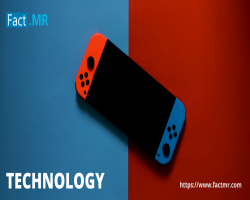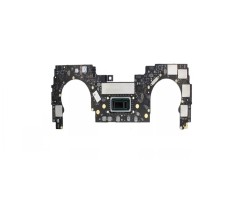Vapor Smoothing Finishing: A Revolutionary Technique for 3D Printing Excellence

In recent years, 3D printing has revolutionized the manufacturing industry, offering limitless possibilities for creating complex and customized designs with greater efficiency and flexibility. While 3D printing provides remarkable advantages, one significant challenge has been improving the surface finish of printed parts. Often, parts created through 3D printing have visible layer lines, rough surfaces, or imperfections that can undermine their aesthetic appeal and functional performance.
To address this issue, innovative techniques such as vapor smoothing have emerged. Vapor smoothing finishing has become a game changer for 3D-printed parts, offering an effective way to enhance the surface quality of printed objects. This article will explore the benefits, process, applications, and potential of vapor smoothing finishing in 3D printing.
What is Vapor Smoothing Finishing?
Vapor smoothing finishing is a post-processing technique used to improve the surface quality of 3D-printed parts. It involves exposing printed objects to a solvent vapor in a controlled environment, which softens the surface and allows it to smooth out, filling in the visible layer lines created during the printing process. The result is a glossy, smooth finish that significantly enhances the appearance and performance of the 3D-printed object.
This technique works particularly well on thermoplastic materials such as ABS (Acrylonitrile Butadiene Styrene), ASA (Acrylonitrile Styrene Acrylate), and PETG (Polyethylene Terephthalate Glycol). The vapor dissolves the surface layer of the printed material, which then re-solidifies as a smooth, glossy finish. Vapor smoothing can be applied to both functional and aesthetic parts, making it a versatile solution for various industries.
The Process of Vapor Smoothing Finishing
The vapor smoothing process typically involves several steps:
-
Preparation of the Printed Object: The first step is to prepare the 3D-printed object for smoothing. This involves cleaning off any support structures or excess material that may be present on the part after the printing process.
-
Setting Up the Vapor Smoothing Chamber: Vapor smoothing requires a special chamber designed to safely contain the solvent vapor. The chamber is sealed to ensure proper control of temperature, pressure, and solvent concentration.
-
Exposing the Printed Part to the Solvent Vapor: The printed part is placed inside the chamber and exposed to the solvent vapor. Common solvents used in vapor smoothing include acetone (for ABS), which is one of the most widely used solvents for this purpose. The solvent vapor gently melts the outer surface of the part, causing the surface layers to smooth out and eliminate visible layer lines.
-
Controlling the Exposure Time: The exposure time to the solvent vapor must be carefully controlled. If the part is exposed for too long, the surface could become overly smooth, or the part could become distorted. Conversely, insufficient exposure may not achieve the desired smoothing effect.
-
Cooling and Finalizing the Finish: After the exposure period, the part is removed from the chamber and allowed to cool. Once cooled, the surface will have a smooth, glossy finish, with the layer lines significantly reduced or eliminated entirely. The part may require additional cleaning or touch-up work, depending on the desired level of finish.
Benefits of Vapor Smoothing Finishing
The vapor smoothing technique offers numerous advantages, including:
-
Enhanced Aesthetic Appeal: One of the most significant benefits of vapor smoothing is the improvement in appearance. It transforms a rough, ridged surface into a shiny, smooth one, giving the part a polished and professional look. This is especially important for parts that are on display or part of consumer-facing products.
-
Improved Functional Performance: Beyond aesthetics, vapor smoothing also has functional benefits. Smoother surfaces reduce friction, which can enhance the performance of moving parts, decrease wear, and improve durability. This makes vapor smoothing ideal for parts that will undergo mechanical stress or need to perform specific functions.
-
Time and Cost-Efficiency: Traditional post-processing methods, such as sanding and polishing, can be time-consuming and labor-intensive. Vapor smoothing offers a faster and more efficient way to achieve a smooth surface without extensive manual labor. This can lead to significant cost savings, particularly in large-scale production environments.
-
Minimized Post-Processing Effort: Vapor smoothing reduces the need for other post-processing steps, such as sanding and painting, which are typically used to improve the surface finish of 3D-printed parts. With vapor smoothing, the need for additional finishing work is minimized, streamlining the production process.
-
Compatibility with Multiple Materials: While vapor smoothing is particularly effective on materials like ABS and ASA, it can also be used with other thermoplastic materials such as PETG. This makes it a versatile option for manufacturers working with a variety of 3D printing filaments.
Applications of Vapor Smoothing Finishing
Vapor smoothing is used across a wide range of industries, including:
-
Prototyping and Product Development: Designers and engineers often use vapor smoothing to create high-quality prototypes that more accurately represent the final product. The smooth finish allows for better evaluation of the part’s form, fit, and function before moving to production.
-
Consumer Products: For industries such as automotive, electronics, and consumer goods, vapor smoothing offers a way to achieve high-quality finishes for parts that will be sold to customers. This technique helps ensure that products meet the required aesthetic standards.
-
Medical Devices: In the medical industry, precision and hygiene are paramount. Vapor smoothing can enhance the surface quality of medical parts, making them more polished and easier to clean, while maintaining the structural integrity needed for functionality.
-
Aerospace and Automotive: In the aerospace and automotive industries, vapor smoothing can improve the aerodynamic properties and durability of parts. Smoother surfaces can help reduce drag and increase the overall efficiency of vehicles and components.
-
Art and Jewelry: Artists and jewelry designers can also benefit from vapor smoothing. The technique allows for the creation of intricate, high-quality pieces with a flawless surface finish that enhances the design’s visual appeal.
Potential Challenges and Considerations
Despite its numerous advantages, vapor smoothing is not without challenges. One key consideration is the handling and disposal of solvent vapors, which can be hazardous if not managed properly. Proper ventilation and safety protocols are crucial when working with solvent-based vapors to ensure the safety of operators.
Additionally, the process may not be suitable for all materials or parts. Some filaments, such as nylon or certain composite materials, may not respond well to vapor smoothing or may require different solvents or techniques to achieve the desired finish.
Finally, while vapor smoothing can produce impressive results, it is essential to monitor the exposure time and solvent concentration carefully. Overexposure to the vapor can lead to distortions in the part’s shape or dimensions, which may compromise the quality of the finished product.
Conclusion
Vapor smoothing finishing is a powerful post-processing technique that can significantly improve the surface quality of 3D-printed parts. By smoothing out layer lines, enhancing the appearance, and improving functional performance, vapor smoothing offers an efficient and cost-effective solution for industries across various sectors. As 3D printing continues to evolve, techniques like vapor smoothing will play a key role in unlocking the full potential of additive manufacturing, enabling the creation of higher-quality, functional, and visually appealing parts.
What's Your Reaction?




















